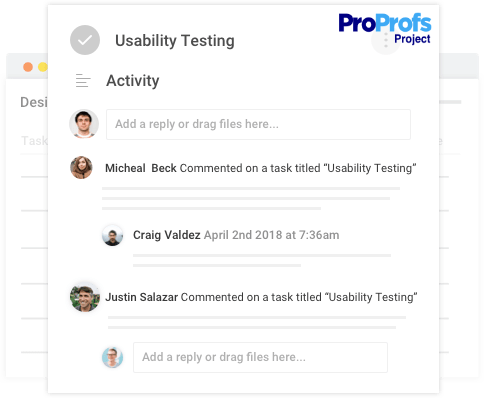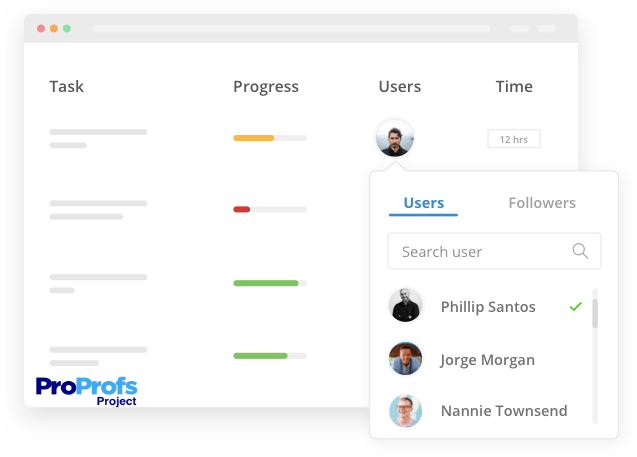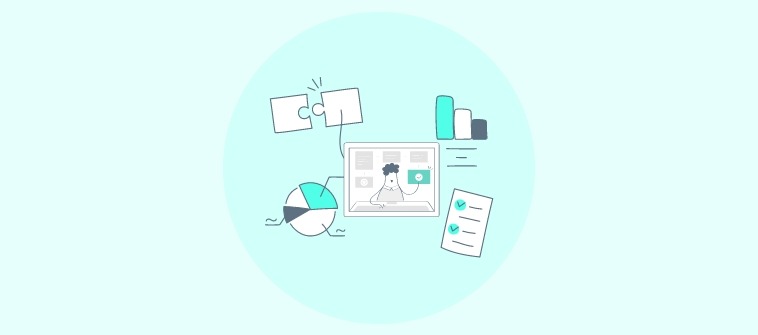Software development life cycle refers to a clearly defined, detailed process undertaken by development teams to develop, test, and deliver software.
Various types of SDLC are used by developers to deliver high-quality software to end-users.
For teams looking for a quick turnaround time and more flexibility in their operations, one of these methodologies that effectively stands out is Agile.
But what is the reason behind the popularity of Agile SDLC ?
The software development industry is brimming with competition.
This has brought forward the need for adopting strategies that help deliver quicker, more efficient, and consistent results.
Owing to this scenario, software development teams have seen a significant shift in their focus to an incredibly important aspect- development speed.
Agile Software Development can help you meet customer expectations by delivering products quickly. This iterative development model involves regular feedback from the stakeholders and shorter review cycles.
In this blog, we cover what the Agile software development life cycle is and how you can implement it effectively for your business with the best agile project management tool.
What Is Agile Methodology?
Agile essentially focuses on adaptability and responding to change rapidly.
It delivers individual product features instead of the whole software in one go, helping accommodate the requirements of the customer more readily.
Agile technology is highly suitable for changing or unpredictable business environments. This flexible model involves concurrent testing and development, leading to an improved quality of the end-product. It involves self-organization and has interchangeable responsibilities across the team.
Agile methodology promotes ongoing collaboration between customers, development teams, and all the stakeholders involved. It breaks down every project into smaller iterations, which can be completed quickly.
This feedback-oriented approach empowers businesses to improve their customer satisfaction by delivering high-value solutions within the expected time frame.
What Is Agile Software Development Life Cycle?
71% of businesses have already adopted Agile technology.
This application of Agile principles to software development has helped developers achieve more productivity and deliver more satisfactory outcomes.
Agile software development life cycle is a process that allows developers to quickly produce software that meets client requirements and fits within the estimated cost.
Agile SDLC focuses on collaboration and allows team members to share feedback and comments for tasks. Each activity has a fixed time frame, helping everyone to stick to deadlines and be more productive.
Instead of a linear, sequential development process, Agile SDLC is much more flexible. It involves seeking regular feedback from the clients to improve the quality of the product. Agile SDLC breaks down the development process into smaller cycles, also known as sprints. These sprints result in faster and more flexible software development.
Agile SDLC is based on the following core values according to the Agile Manifesto:
- Individual interactions are valued over processes and tools
- More focus on working software than documentation
- Collaboration over contract negotiations
- Responding to change
Feedback from the customers is gathered after every sprint, allowing the team member to work on areas that do not meet the client’s expectations.
Read More: Why Choose Agile Project Management Software for Mobile App Development Projects?
Difference Between Agile SDLC and Waterfall SDLC
The key differences between Agile and Waterfall development life cycles are:
| Agile SDLC | Waterfall SDLC |
| Integrated development and testing
Product delivered in shorter iterations Ongoing planning Better collaboration More flexibility and scope for changes |
Linear development process where testing follows complete development
Product delivered in one go Detailed planning at the beginning Limited collaboration Cannot make changes once the development begins |
Read More: Hybrid vs Agile Approach: Which is Better for Efficient Project Management
Types of Agile Life Cycle
Agile methodologies can work well in development environments where stakeholders can provide instant feedback. This is essential to keep the development process in line with the requirements of the clients.
While different Agile methodologies are available, they follow the same core principle- adaptability and iteration. They only differ in how the stages of the software development process are defined.
Some of the most commonly used software development life cycle Agile are:
- Kanban
- Scrum
- ScrumBan
- Lean development
- Adaptive development
- Dynamic System Development
6 Stages of Agile Development
Agile software development life cycle is collaborative and transparent.
It allows the development team to break down the final software into smaller elements that can be delivered easily to the customers.
With Agile development, customers get the opportunity to provide their input at every stage of the development process. Every iteration has a fixed deadline, and the stakeholders’ feedback is collected at the end of every iteration.
An Agile software development workflow goes through the following phases-
1. Requirement Analysis
The first stage of Agile development involves a thorough analysis of the business requirements. This stage also involves carrying out an estimation of the time, effort, and resources required for the project.
You can define the iteration based on your backlog and input from the stakeholders during this phase of the Agile product life cycle.
2. Initiation
After the requirements have been clearly established, begins the development phase. A functional timeline with sprints lasting two to four weeks is created for the project.
The conception stage involves defining responsibilities and establishing a workflow. The details are shared with the stakeholders, and their feedback is incorporated into the project iterations.
3. Iteration
This phase is where the development begins. The product is developed in short development cycles or sprints based on the established requirements. Each sprint has a fixed deadline before which the product has to be delivered for review.
After each sprint, the feedback from clients is gathered and shared with team members for continuous improvement.
4. Testing
Quality assurance testing is a critical component of Agile development. The product is tested for its functionality and performance before it is ready for deployment. Any issues or glitches found are resolved before the product release. This stage also includes documentation for the product.
5. Deployment
The release of the product follows the testing stage. The iteration moves into production, and the final product is made available to the end-user.
6. Gathering Feedback
After the deployment of the product, feedback from the clients has to be collected to make improvements in the upcoming iterations.
Agile technology requires you to be flexible in your development approach. You need to continuously seek and implement feedback to deliver highly functional software.
The Agile product development life cycle consists of repeated iterations to improve the quality of the final product. Multiple iterations for different products can be run simultaneously, helping software development teams achieve better productivity and meet customer expectations.
Read More: Agile Planning: What Is It & How You Should Do It
Implementation of Agile SDLC
Even with its countless advantages, Agile SDLC can fail to produce the desired results.
The reason- ineffective adoption and implementation.
To avoid this, you need to follow the best practices to ensure the seamless integration of Agile technology into your business processes.
A. Transition Effectively
To get the most out of Agile software development, you need to transition to the technology effectively.
This requires you to collaborate with all stakeholders and take their input into consideration. Choose a tool that makes this transition easier for you by allowing you to communicate with team members and clients with ease.
B. Hold Daily Meetings
You need to hold regular team meetings to keep things on track. These meetings can help you bring accountability to your team and address any roadblocks in the transition process.
Daily meetings can help your team members work in better collaboration and deliver products quicker. Keeping everyone up to speed with the progress of the development process can become easier with these daily meetings.
C. Choose the Right Methodology
You need to take your business’s size, team structure, requirements, and objectives into account when choosing the Agile methodology.
With the right framework, your team can complete iterations quicker and more efficiently. Whether you choose Scrum, Kanban, or any other Agile methodology, make sure it aligns with your team’s needs.
D. Gather Feedback
Collect feedback from stakeholders after every iteration to ensure that you are meeting client expectations.
Share this feedback with your development team after every iteration for improved efficiency. You can improve upon the shortcomings in the existing sprints with the help of this feedback to deliver better quality of products and keep customers satisfied.

E. Routinely Review
It is essential to periodically review your sprints to improve them. Only with regular review and feedback incorporation can you find the most effective iteration for product development.
Use powerful Agile project management software to optimize your backlog and improve sprints to deliver a product that meets customers’ expectations.
Benefits of Agile SDLC
Agile SDLC is an iterative process that can work well for organizations of all sizes. It focuses on increasing customer satisfaction by breaking down the software into smaller segments and delivering them quickly.
Agile system development life cycle works on sprints which can be defined as specific time periods allocated for the completion of tasks.
Following are the benefits that Agile technology can provide to a development team:
a. Speed
The final product can be deployed quicker with Agile development. This is a result of the project being completed in shorter iterations. The project manager has better control over the development process and can streamline the processes with ease. Agile development involves defining objectives clearly, which saves time and increases productivity.
b. Collaboration
A significant advantage of Agile development is that everyone can be involved in the development process. With the best Agile project management software, team members can communicate effectively and deliver highly functional software solutions in less time. This can lead to an increase in the overall productivity of the team since there is no room for any miscommunication. Essential updates or changes can be shared across the team easily with real-time alerts.

c. Transparency
Agile development provides more transparency to the clients allowing them to review if the product meets their requirements. Feedback can be easily shared with the development team promoting transparency and accountability. The access to critical information for all team members and stakeholders from a single platform further strengthens the development process.
Read More: How Collaborative Project Management Software Can Help Achieve Complete Team Transparency
d. Security
Each sprint of the Agile development process can include security checks to ensure the secure development of the software. These security activities can be modified to suit the specific iteration, leading to more secure development. Agile development focuses on implementing security features during the development instead of after.
e. Improved Quality
Since this development methodology is highly flexible and adaptable, the quality of the final software is in line with the clients’ expectations. Agile development life cycle allows the clients and stakeholders to provide regular input, which can enhance the quality of the final product.
f. Reduced Risk
Agile development minimizes the risk of the development process. It ensures that the resources are utilized better, consequently eliminating any unnecessary expenses or budget overruns. Agile development focuses on mitigating risks to improve the overall efficiency of the software development life cycle.
Read More: 7 Common Reasons for Project Failure
Adopt a Flexible Development Approach With Agile SDLC!
Agile software development life cycle can help deliver better value to your customers by helping you keep them involved in the development process. It accelerates the development of product components, allowing you to launch the final product quickly.
With an Agile workflow management software, your team can achieve better productivity. Updates can be shared easily, and the entire team can collaborate more effectively. Ineffective communication between team members can lead to unnecessary delays or shortcomings in the final product. This can be avoided with the application of Agile technology in the software development life cycle.
A reliable Agile tool, such as ProProfs Project, can help your team manage their backlog, plan sprints, gather feedback and improve the overall quality of the software. It can also be used to assign and monitor the progress of tasks.
FAQs:
Let’s delve into the commonly asked questions about Agile SDLC and its benefits.
- What is the difference between SDLC and Agile?
SDLC refers to the steps followed for the development, testing, and deployment of software. Agile, on the other hand, refers to a methodology that can be implemented for SDLC. Agile refers to an incremental approach where the final product is broken down into smaller components that are delivered through short iterations.
2. Is Agile an SDLC model?
SDLC is a process that can work on various methodologies. One of these methodologies is Agile, which is an iterative approach that focuses on collaboration. Agile SDLC focuses on continually improving the quality of the software product by seeking and implementing feedback from the clients. Agile methodologies drive transparency by allowing the customer to view if the project is following the right development course.
3. What is the difference between Waterfall and Agile?
The most significant difference between Waterfall and Agile models is flexibility. The Waterfall model involves drafting a detailed plan and sticking to it throughout the project. The Agile model, on the contrary, is quite flexible and can respond to changes quickly. It works on shorter iterations that strengthen collaboration, accountability, and transparency.
4. What is the main difference between Waterfall SDLC and Agile SDLC?
Both Agile and Waterfall SDLC are popular among software development teams. Agile SDLC is more adaptive and flexible than Waterfall SDLC, which is much more organized and well-structured. Agile SDLC is a suitable approach for changing environments, while Waterfall includes a proper sequence of steps and documentation. Agile SDLC has more involvement of the stakeholders because it follows a concurrent process of testing and development.
FREE. All Features. FOREVER!
Try our Forever FREE account with all premium features!





